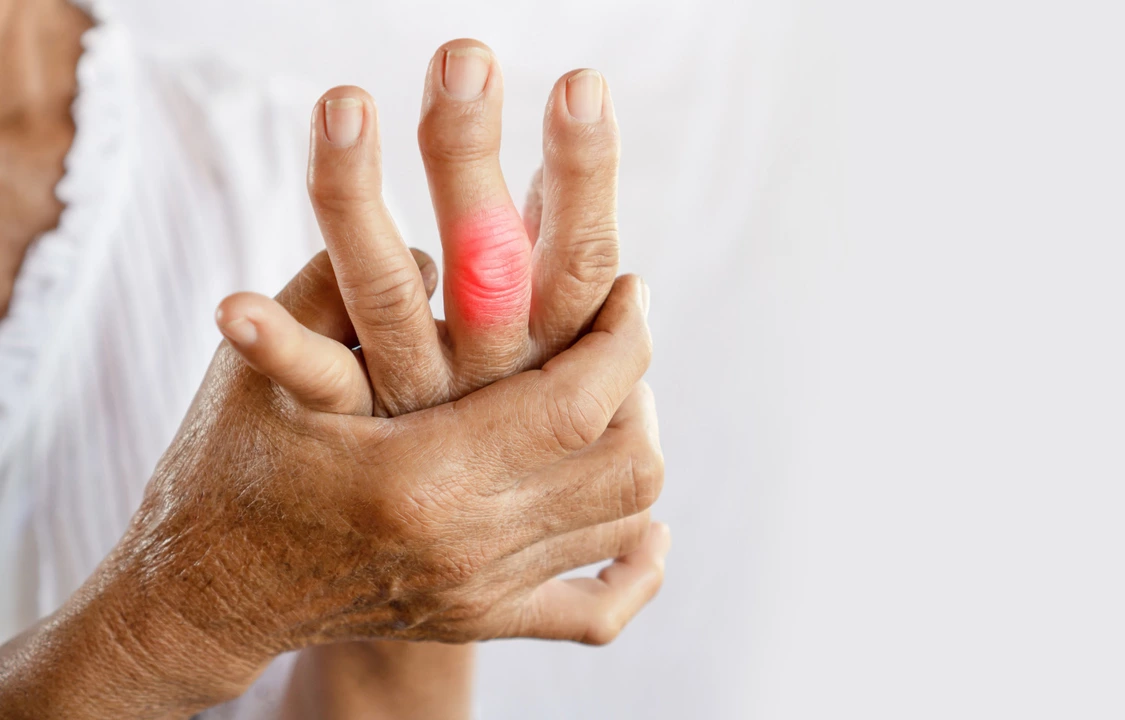Gout: what causes it and how to get relief
Gout starts when uric acid builds up and forms sharp crystals in a joint. That crystal buildup triggers sudden, intense pain, redness, and swelling—often at the big toe. Attacks can wake you at night and leave the joint tender for days. The good news: most attacks can be treated and future flares reduced with simple steps.
Quick fixes for an attack
When a gout flare hits, act fast. Over-the-counter NSAIDs like ibuprofen work well for many people if you have no stomach or kidney issues. If NSAIDs aren't an option, doctors often prescribe colchicine or a short course of oral steroids. Ice the joint for 10–15 minutes several times a day to ease pain and swelling. Rest the joint and avoid alcohol and high-purine foods until the flare passes.
If pain is extreme or you have fever, see a doctor right away. Your provider may remove joint fluid to confirm gout and rule out infection. Joint aspiration also helps guide treatment, especially if this is your first attack.
Stop the next flare: long-term steps
Chronic gout is managed by lowering uric acid. The two common options are allopurinol and febuxostat; both cut uric acid production. Your doctor will aim for a target uric acid number and may start treatment slowly to avoid triggering flares. If you already get frequent attacks, long-term urate-lowering therapy is the best way to reduce joint damage and prevent tophi (hard deposits under the skin).
Diet and lifestyle matter. Cut back on red meat, organ meats, shellfish, and sugary drinks—these raise uric acid. Keep alcohol, especially beer, to a minimum. Losing extra weight and staying hydrated help the body flush uric acid. Dairy, vegetables, and coffee (in moderation) are linked to a lower gout risk.
Some medicines raise uric acid. Diuretics (water pills), low-dose aspirin, and certain chemotherapy drugs can increase risk. If you take these, talk to your doctor before changing anything. Kidney disease also affects uric acid handling, so your doctor will check kidney function before choosing meds.
How is gout diagnosed? A combination of history, physical exam, blood test for uric acid, and sometimes joint fluid analysis does the job. X-rays can show joint damage in long-standing cases, but they won't pick up early crystal deposits.
Practical daily tips: drink plenty of water, aim for gradual weight loss if needed, and choose low-purine proteins like eggs and low-fat dairy. Keep a symptom log—note what you ate, medications, and how long the attack lasted. That makes it easier for your doctor to spot triggers and adjust treatment.
Gout can be painful, but with the right mix of quick treatment and long-term uric acid control, most people get back to normal life. If you're unsure what to do during an attack or whether you need daily medication, talk to a healthcare provider. Quick care and a few smart changes go a long way.
As someone who experiences joint pain, I recently came across an interesting connection between amlodipine and gout. Amlodipine is a common medication used to treat high blood pressure, but it has been found to potentially increase the risk of gout. Gout is a type of arthritis caused by a buildup of uric acid crystals in the joints, leading to painful inflammation. If you're taking amlodipine and experiencing joint pain, it's important to discuss this with your doctor. They may recommend adjusting your medication or exploring alternative treatment options to help alleviate your symptoms.
